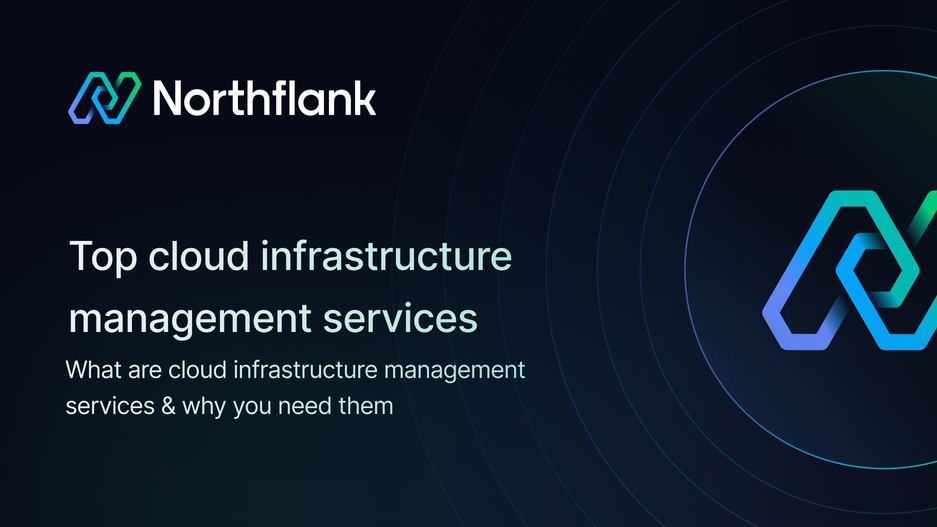

Top 10 cloud infrastructure management services in 2025
Cloud infrastructure management services help organizations deploy, monitor, optimize, and secure their cloud resources without the operational overhead of managing complex systems like Kubernetes. This guide covers the leading solutions, key capabilities to evaluate, and how to choose the right approach for your team.
- What they are: Cloud infrastructure management services provide the tools, platforms, and strategies to control cloud resources, from compute and storage to networking and security, without manual configuration of complex orchestration systems.
- Why they’re important: Engineering teams spend significant time managing infrastructure instead of shipping features. The right cloud infrastructure management solution reduces this overhead while maintaining control, security, and scalability.
- Three main approaches:
- Developer platforms: Solutions like Northflank that abstract cloud infrastructure complexity while preserving flexibility, giving teams centralized control over deployments, monitoring, and scaling without operational burden
- DIY cloud-native tools: Full control using Kubernetes, Terraform, and native cloud tools, but requires significant engineering expertise and time investment
- Managed services (outsourced): MSPs handle infrastructure for you, but require expensive annual contracts and slower response times for changes
- Top solutions covered:
- Northflank – Developer platform for cloud infrastructure management with Kubernetes abstraction, Bring Your Own Cloud (BYOC) support, no vendor lock-in, and 5-minute deployment
- AWS Control Tower & CloudFormation – Native AWS management and IaC provisioning
- Terraform – Open-source infrastructure as code for multi-cloud provisioning
- Datadog – Observability and monitoring across cloud infrastructure
- Kubernetes (self-managed) – Industry-standard container orchestration for maximum control
Read on to understand the core components of cloud infrastructure, challenges organizations face, key capabilities to evaluate, and how to choose between developer platforms, DIY approaches, or managed services. Modern teams are increasingly choosing platforms that deliver both simplicity and control for efficient cloud infrastructure management.
Cloud infrastructure management services encompass the practices, tools, and platforms used to deploy, monitor, optimize, and secure cloud-based infrastructure.
It includes everything from provisioning compute resources and configuring networking to implementing security policies and controlling costs across public, private, on-prem, hybrid, or multi-cloud environments.
Your applications most likely need robust, scalable infrastructure to run reliably, but the challenge lies in manually managing your infrastructure. Doing it manually could eat up your engineering resources and add layers of complexity.
The goal of cloud infrastructure management is to maintain full control over your cloud resources while reducing the operational burden on your development teams.
Adopting cloud infrastructure management solutions can help address several key problems:
- Operational efficiency: Manual infrastructure management doesn't scale. You need automation for provisioning, scaling, and maintaining resources across environments.
- Cost control: Without proper management, your cloud spend spirals due to over-provisioned resources, forgotten instances, and poor resource allocation. Effective management could help reduce waste by 30-40%.
- Security and compliance: Your infrastructure must meet security standards and regulatory requirements. Management solutions enforce consistent policies across all your cloud resources.
- Developer productivity: Your engineers should build features, not write YAML or troubleshoot Kubernetes clusters. The right tools free your developers from infrastructure concerns.
- Multi-cloud flexibility: If you're using multiple cloud providers, management solutions provide consistent workflows across AWS, GCP, Azure, on-prem, and other platforms.
When people talk about cloud infrastructure, they're really talking about four building blocks that work together:
- Compute - gives you the processing power to run your applications, from virtual machines and containers to serverless functions and GPUs for AI workloads.
- Storage - is where your data lives, from databases and file systems to object storage for backups and assets.
- Networking - connects everything together through load balancers, firewalls, VPNs, and CDNs, ensuring your services communicate securely and perform well.
- Virtualization - is the abstraction layer that lets multiple virtual resources share physical infrastructure (VMs, containers, and software-defined networks).
These four components get delivered through three main service models: IaaS (raw infrastructure you manage yourself, like AWS EC2), PaaS (managed platforms where you just deploy code, like Heroku), and SaaS (fully managed applications).
You don't have to choose between PaaS simplicity and IaaS control anymore. Platforms like Northflank give you the developer experience of PaaS with the flexibility of IaaS, especially through features like Bring Your Own Cloud, where you deploy in your own AWS, GCP, or Azure accounts while Northflank handles the complexity.
Organizations typically choose between three main approaches:
Platforms like Northflank abstract infrastructure complexity while preserving control.
You deploy in minutes, scale from 1 to 1,000+ services without hitting limits, and have the option to run in your own cloud accounts via Bring Your Own Cloud (BYOC) or use the managed infrastructure.
It comes with built-in CI/CD, monitoring, and multi-cloud support without vendor lock-in. You can also deploy to Kubernetes without writing YAML.
Why choose this approach? Unlike traditional PaaS (Heroku), there's no graduation problem. Unlike cloud-native tools (AWS, GCP), you're not locked in. Unlike consulting firms, you maintain full control. Unlike DIY Kubernetes, no YAML hell. Best for teams (5-500 developers) who want to ship features, not manage infrastructure.
Third-party MSPs handle all infrastructure operations on your behalf. Completely hands-off but expensive with significant annual contracts, slow to implement changes, and creates vendor dependency. Suitable for organizations that prefer to completely outsource infrastructure management.
DIY cloud-native tools (Kubernetes, Terraform, CloudFormation) give maximum control but require expert platform teams. Engineers spend significant time on infrastructure instead of features. Steep learning curve, ongoing maintenance burden, and YAML complexity. Learn about container orchestration challenges first.
See a quick overview to help you decide:
| Approach | Time to deploy | Control | Ops burden | Works well for |
|---|---|---|---|---|
| Developer platforms (like Northflank) | Minutes | High | Low | Teams (Startups & Enterprises) of any size wanting to ship fast |
| Managed services | Weeks | Low | None (outsourced) | Organizations preferring full outsourcing |
| DIY cloud-native | Weeks | Maximum | Very high | Teams with dedicated platform engineering resources |
Now that you understand the different approaches and what to look for, let's review the top cloud infrastructure management tools and platforms across different categories to help you find the right fit:
Category: Developer platform
Best for: Teams wanting production-grade cloud infrastructure without the operational complexity
A production-ready platform that simplifies cloud infrastructure management by abstracting Kubernetes complexity while preserving developer flexibility.
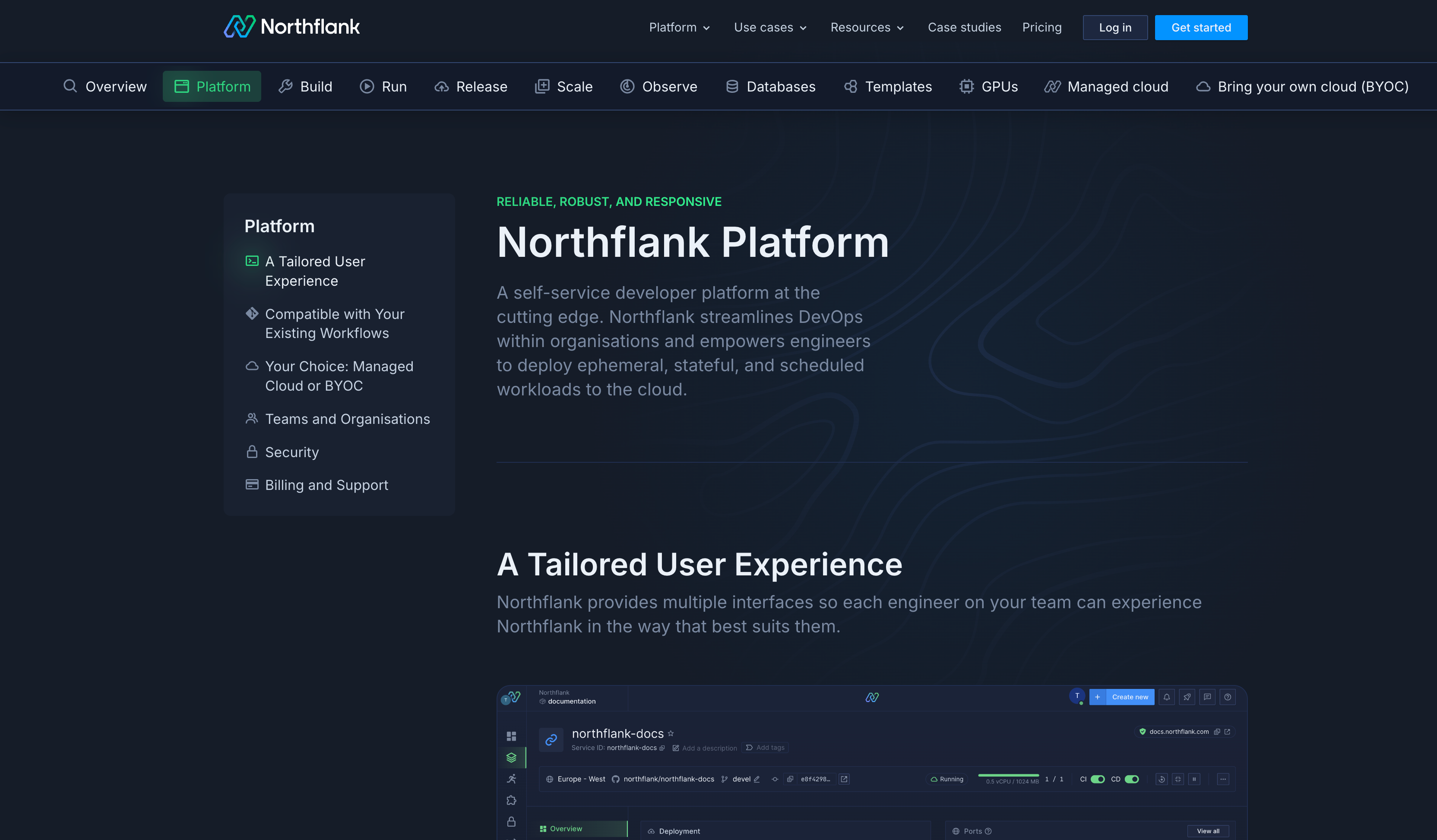
What it offers:
- Deploy your first workload in under 5 minutes (See how)
- Built-in CI/CD with GitOps workflows
- Auto-scaling and load balancing
- Real-time monitoring and logs
- GPU workloads and AI infrastructure support
- No YAML required (manage through UI, CLI, or API)
- Multi-cloud management across AWS, GCP, Azure, Civo, Oracle, and bare-metal
- Hybrid cloud and on-premise deployment options
Pros: Self-service platform with full control, no vendor lock-in, no graduation problem, massively simplified operations
Cons: Platform abstraction (though you still get Kubernetes primitives when needed)
Why it stands out: Northflank delivers production-grade cloud infrastructure management without operational burden. Unlike consulting firms, you maintain full control. Unlike Oracle/AWS, you're not locked to one cloud. Unlike traditional PaaS, there's no graduation problem. Unlike DIY Kubernetes, there's no YAML hell.
See pricing details & try the free developer sandbox or book a demo with an expert engineer to see how Northflank can simplify your cloud infrastructure.
Category: Native cloud management
Best for: AWS-centric organizations
Infrastructure as code tool for AWS resources with governance and account management for multi-account environments. AWS Control Tower is the orchestrator, and AWS CloudFormation is an underlying tool.
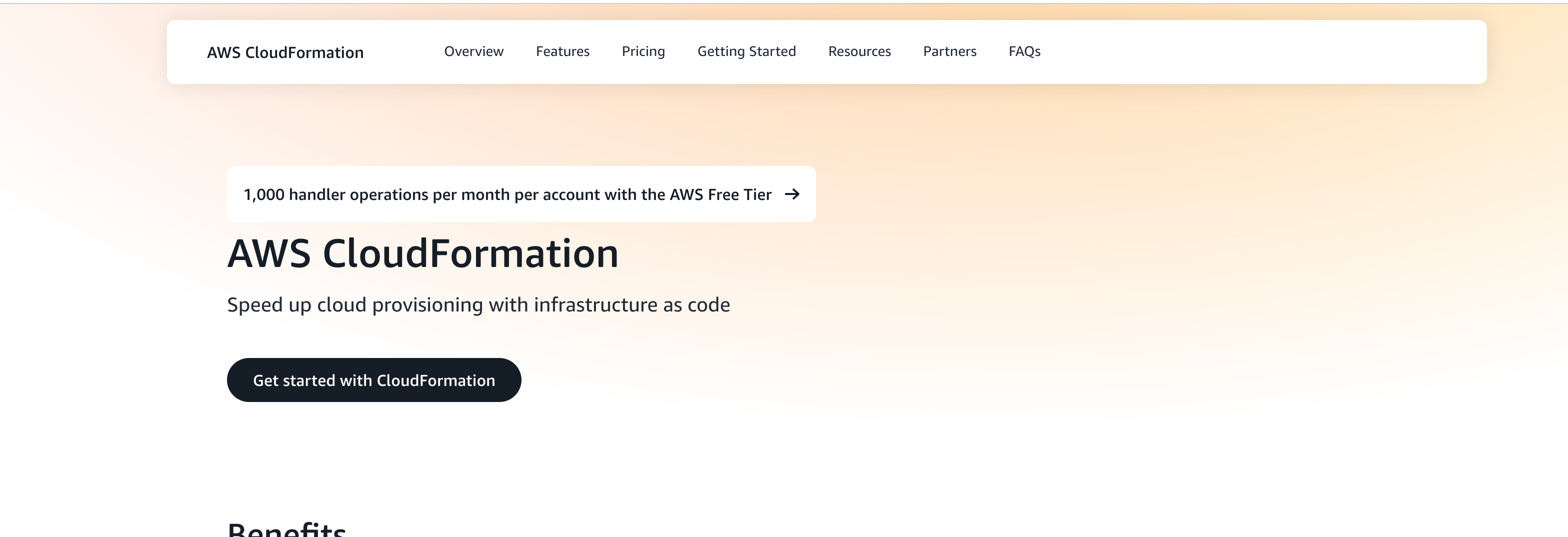
What it offers:
- Template-based infrastructure provisioning
- Multi-account governance
- Native AWS service integration
- Automated resource management
Pros: Deep AWS integration, no additional cost, powerful automation
Cons: AWS-only (vendor lock-in), steep learning curve, limited multi-cloud support
Category: Infrastructure as code
Best for: Multi-cloud infrastructure provisioning
Open-source IaC tool used to define and provision infrastructure across cloud providers.

What it offers:
- Multi-cloud infrastructure provisioning
- Declarative configuration language
- State management
- Large provider ecosystem
Pros: Multi-cloud support, extensive ecosystem, mature tooling
Cons: Requires expertise, manual orchestration needed, steep learning curve
Category: Observability & monitoring
Best for: Full-stack monitoring and analytics
SaaS-based monitoring solution providing metrics, traces, and logs across infrastructure and applications.

What it offers:
- Full-stack observability
- 200+ integrations
- Real-time metrics and alerting
- Application performance monitoring
Pros: Comprehensive observability, intuitive UI, powerful analytics
Cons: Can be expensive at scale
Category: Container orchestration
Best for: Teams with dedicated platform engineering expertise
Industry-standard container orchestration system providing maximum flexibility and control.

What it offers:
- Container scheduling and orchestration
- Auto-scaling and self-healing
- Service discovery and load balancing
- Extensive ecosystem
Pros: Powerful, extensive ecosystem, industry standard
Cons: Complex, requires constant maintenance, steep learning curve. Consider Kubernetes management tools or container management platforms to reduce operational burden.
Category: Native cloud management
Best for: Azure-centric organizations
Azure's native infrastructure management platform with templates for deploying and managing resources.

What it offers:
- Template-based deployments
- Role-based permissions
- Azure service integration
- Resource grouping and tagging
Pros: Deep Azure integration, no additional cost
Cons: Azure-only (vendor lock-in), limited multi-cloud capabilities
Category: Kubernetes management
Best for: Multi-cluster Kubernetes environments
Open-source platform for managing multiple Kubernetes clusters across hybrid and multi-cloud environments.

What it offers:
- Multi-cluster management
- Centralized authentication
- Workload management UI
- Policy enforcement
Pros: Multi-cluster management, good UI, open-source
Cons: Still requires Kubernetes expertise, adds complexity layer
Category: Cloud cost management and IT asset management
Best for: Enterprises managing multi-cloud costs and IT assets
Platform for cloud cost optimization, budget control, and IT asset management across cloud and on-premises environments.
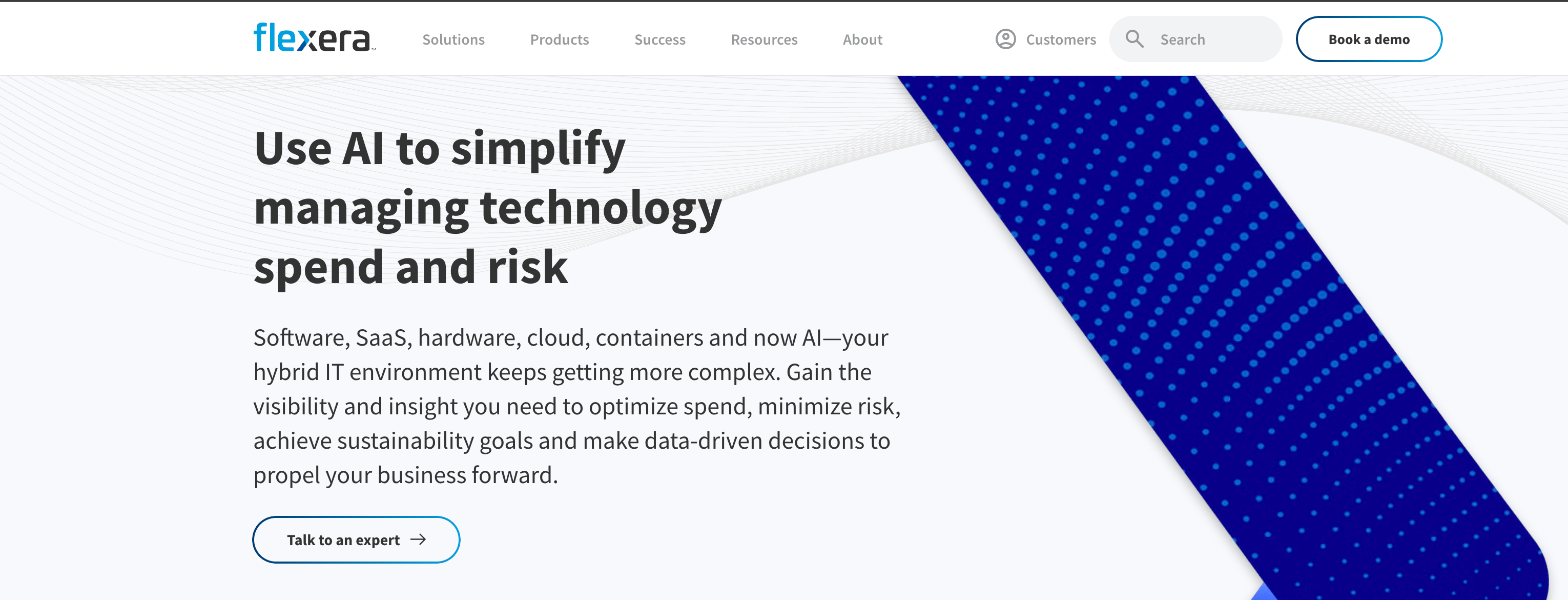
What it offers:
- Cloud cost analytics and reporting
- Budget alerts and forecasting
- Resource optimization recommendations
- Multi-cloud and hybrid-IT cost tracking
Pros: Cost analytics, multi-cloud support, bridges on-premises and cloud spending
Cons: Expensive with complex pricing, steep learning curve, advisory role rather than direct infrastructure provisioning
Category: Enterprise Kubernetes platform
Best for: Enterprises with extensive compliance requirements
Enterprise Kubernetes distribution with built-in security, developer tools, and operational features.

What it offers:
- Enterprise Kubernetes distribution
- Built-in security and compliance
- Developer console and CI/CD
- Multi-cloud deployment
Pros: Enterprise-ready, comprehensive security, strong support
Cons: Expensive, complex licensing, requires dedicated expertise
Category: Hybrid cloud management
Best for: Hybrid cloud orchestration
Unified platform for managing on-premises and public cloud resources with workflow automation.
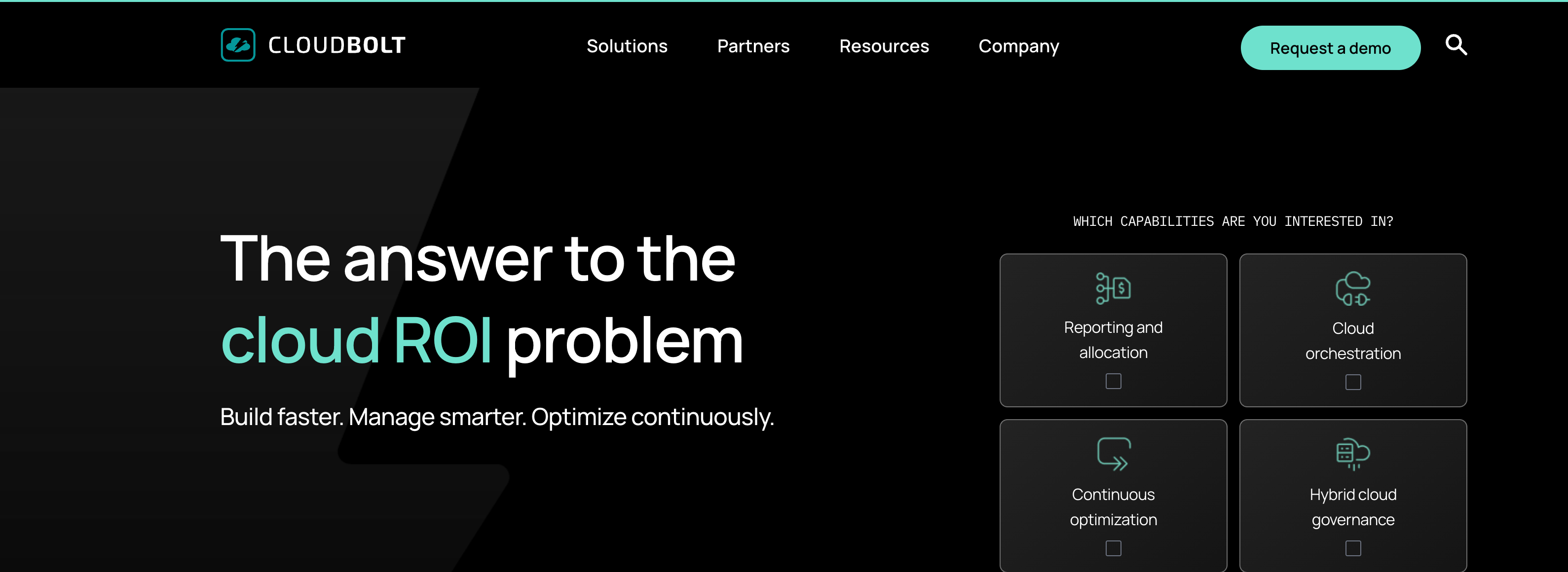
What it offers:
- Hybrid cloud orchestration
- Self-service portal
- Cost management
- Workflow automation
Pros: Hybrid cloud support, unified interface
Cons: Additional complexity layer, requires integration effort
Cloud infrastructure management doesn't have to mean choosing between rigid platforms that limit growth or spending months building DIY Kubernetes clusters. Today's teams need solutions that deliver both simplicity and control.
Northflank provides production-grade infrastructure built on Kubernetes without the operational burden. Deploy your first container in under 5 minutes, scale to production workloads serving millions of users, and run in your own cloud accounts (AWS, GCP, Azure, Civo, Oracle) or on Northflank's managed infrastructure.
If you're migrating from Heroku, outgrowing a traditional PaaS, moving to the cloud from on-premise, or tired of managing raw Kubernetes, Northflank gives you the tools to ship faster without sacrificing flexibility.
Start deploying on Northflank today with the free tier available.
See how companies like Cedana use Northflank to deploy complex Kubernetes workloads with microVMs and secure runtimes in production, or learn about container deployment best practices. Try the free developer sandbox or book a demo with an expert engineer to see how Northflank can simplify your cloud infrastructure.